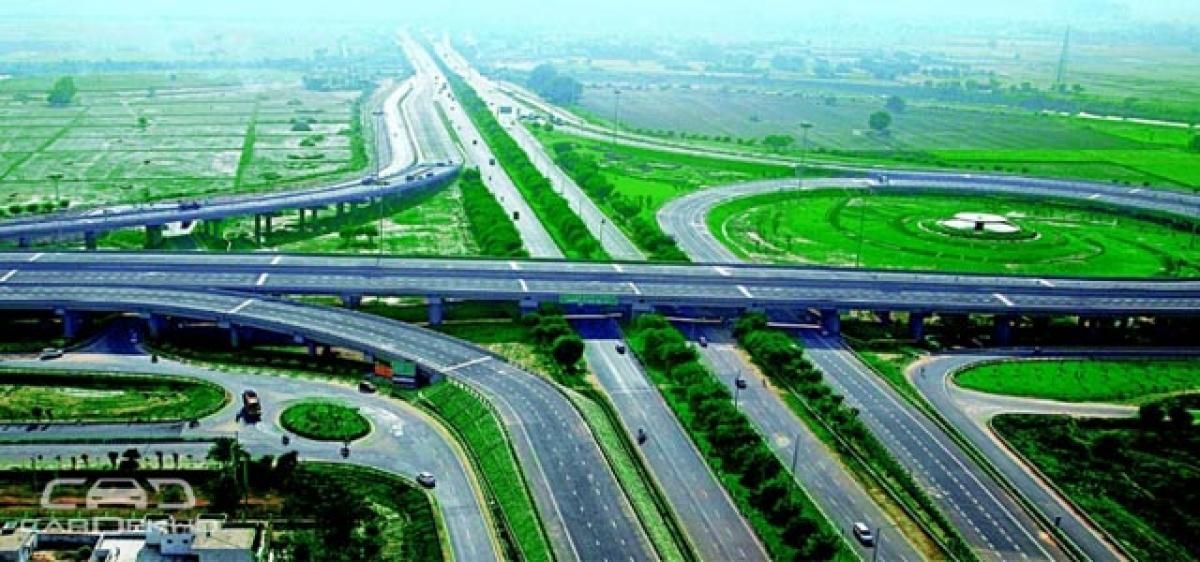All-weather roads surely speed up India’s growth

The present NDA government has rightly focussed on the roads sector as connectivity is the key to growth, especially in the rural and semi-urban areas of the country.
The present NDA government has rightly focussed on the roads sector as connectivity is the key to growth, especially in the rural and semi-urban areas of the country. According to available reports, the Centre has planned to develop 44 highway stretches, totalling 27,000 km as ‘economic corridors’ for seamless movement of cargo vehicles, deepen economic activities and in the process create jobs. This new plan is expected to be completed within six years.
- Need for seamless movement of cargo vehicles
- Govt to develop 44 highway stretches of 27,000 km
- 15,000-km feeder routes to these corridors planned
- This will deepen economic activities, pave way for jobs
It is understood that this would be the biggest highway expansion plan since the rolling out of the Golden Quadrilateral and North-South East-West corridor, totalling 13,000 km. during the Vajpayee regime. These stretches pass through and connect major hubs of economic activities such as manufacturing clusters and ports.
Another 15,000 km has been identified to be developed as feeder routes to these economic corridors, which will be developed by the Ministry of Road Transport and Highways. Interconnecting corridors will also be developed to link the 44 economic corridors and the Golden Quadrilateral. This network would eventually carry 80 per cent of the country’s freight.
But while creation of national highways is a necessity, a recent report of the Road Transport Ministry revealed that 78 per cent of these highways are either one or two lane affairs. One-third is less than two lanes, making the task of four-laning India’s economic lifeline a challenging endeavour. Nearly 40 per cent including rural, intra-district and State highways are not metalled, outlining limitations in connectivity.
According to the report, just five States – Maharashtra, UP, Karnataka, West Bengal and Assam – account for 43 per cent of the road network. Assam has the maximum length of unsurfaced roads (2.67 lakh km) followed by West Bengal and Maharashtra (1.85 lakh km each). Even Delhi, which ranks fourth in the list of States with maximum urban roads, has nearly 8700 km of unsurfaced stretches. The report is dismal and the Centre would need to nudge these and other States to improve quality of roads.
As per available statistics, road length increased from 33.73 lakh km in 2000-01 to 54.72 lakh km in 2015 – the second largest network in the world -- out of which rural roads account for 61 per cent of the entire network. State and national highways, which carry over 60 per cent traffic, have around 5 per cent share. There are now plans to increase the length of these highways from 1.05 lakh km to 1.40 lakh km.
It may be mentioned here that at 0.66 km of roads per square km of land, the quantitative density of India’s road network is similar to that of the United States (0.65) and far higher than that of China (0.16) or Brazil (0.20). However, qualitatively India’s roads are a mix of modern highways and narrow, unpaved roads, and are being improved, but rather slowly. As of 2013, only around 58 per cent of Indian roads were paved which may have improved to around 62 lakh.
While the activity entails huge expenditure, the Government has started the National Infrastructure Fund (NIF) with a corpus fund of Rs 40,000 crores. The Rural Roads Development Vision Plan (RRDPV) 2025 (formulated way back in 2007), in its broad assessment of the physical and financial requirements for roads, found that investments in construction, upgrading and maintenance would need to increase from the current level of Rs 11,000 crore per annum to Rs 29,000 crore per annum by the 14th Plan (2022-27). The Vision document stated that the proposed current investment of 0.9 per cent of the GDP should be considered modest and realistic.
It is a well-known fact that road connectivity along with electricity access has a great impact in development of villages and the thrust of the last few years has witnessed high wage growth in rural India than in urban areas, according to a study by Crisil and other agencies. Simultaneously, a renewed thrust on research and development to build sustainable and environment friendly road infrastructure is imperative to reduce maintenance cost, reduce life-cycle costs and the likes, so that roads could be long lasting and durable in different weather conditions.
By Dhurjati Mukherjee














